What’s the secret to growing a healthy, vigorous plant this season?
Hint: It doesn’t start with what you see above ground.
Root depth is a topic that isn’t often considered when we think about growing in containers, building raised beds, or planning an irrigation system for our garden.
But knowing how deep the roots of your plants reach is one of the most important pieces of the puzzle, especially if you’re working with limited space.
We tend to visualize our plants growing up or out, but before we transplant that first seedling, we need to know how deep they’ll go beneath the surface as well.
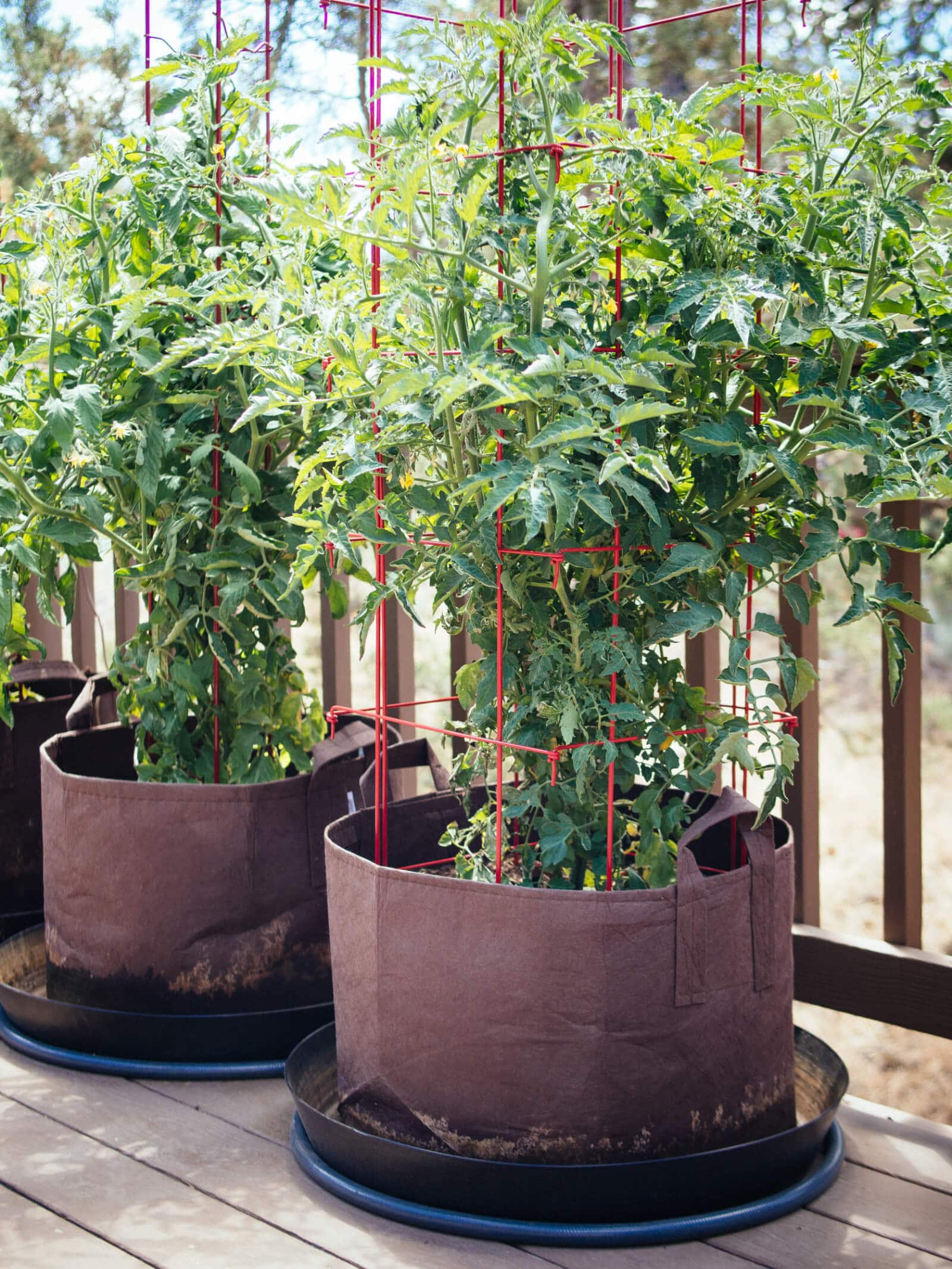
Why does root depth and soil depth matter?
Most plants will grow within the space you allow them. They’ll survive with a minimum of soil depth, but they’ll thrive if you give them as much room as possible for their roots to branch out and breathe.
In fact, if you’re a container gardener, this plant study found that simply doubling the pot size allowed plants to grow 43 percent larger.
So forget those 5-gallon buckets for your indeterminate tomato vines—you want them in half-barrel planters (at least 15 gallons) or larger for a good harvest.
Related: How to grow tomatoes in containers successfully
Just like the saying goes—Feed the soil, not the plants—you want to focus on building strong roots, not just healthy stems and leaves.
Roots that grow deep down in the soil are better able to anchor plants in the ground, maximize their water uptake, and pull in more nutrients and trace minerals.
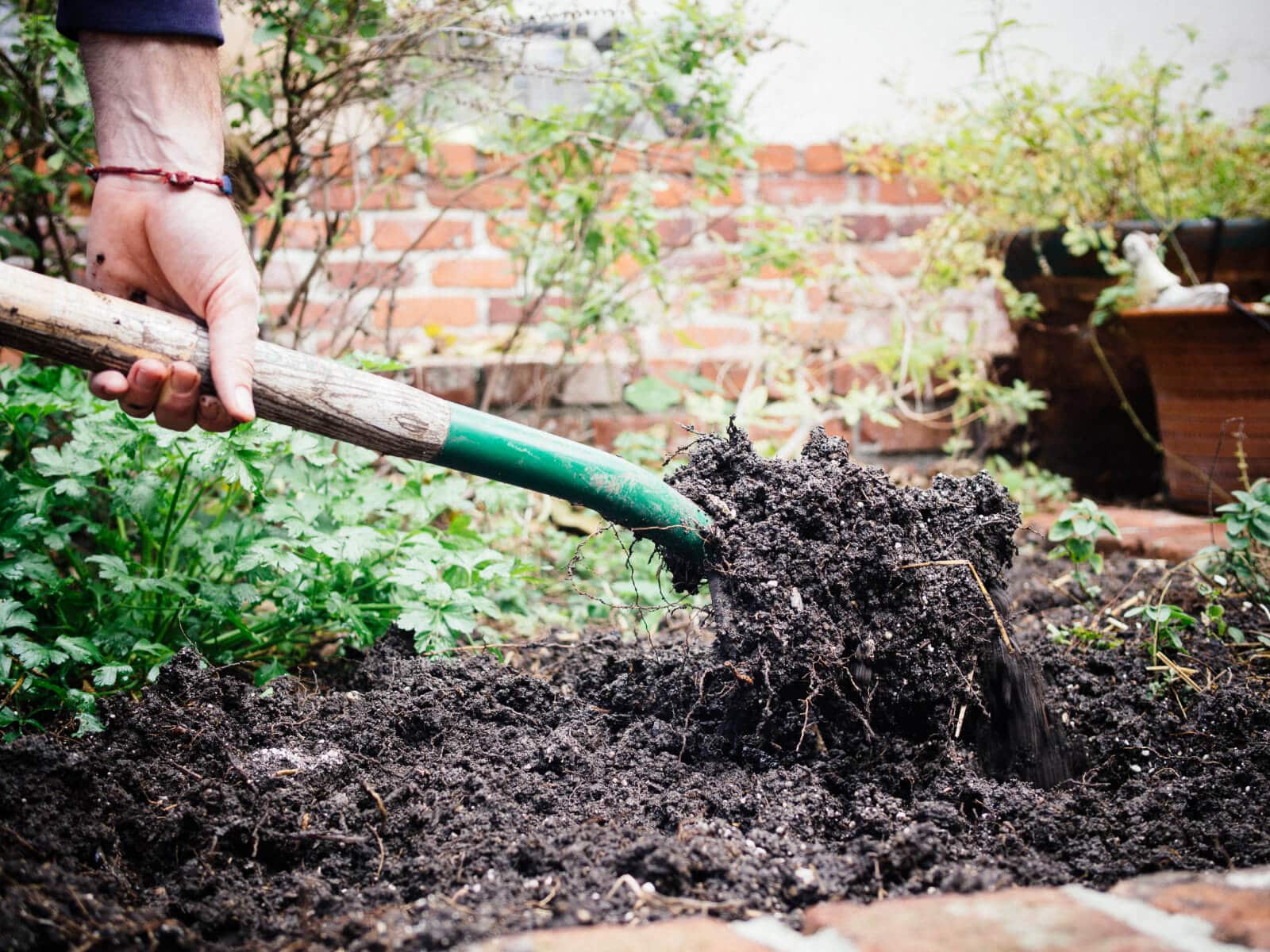
Knowing the root depth of vegetables can help you plan your garden better
If you’re getting a garden bed ready for planting, knowing the root depth of the plants you want to grow can help you determine how extensively to prepare the soil.
For example, shallow-rooted plants like lettuce may do better in soil that’s high in clay and doesn’t drain well.
This may seem to go against common gardening wisdom, but after dealing with heavy clay soil for nearly a decade in my old garden, I’ve realized there’s a time and place for it.
Since the roots of lettuce and other leafy greens stay close to the surface, they like the extra moisture, tolerate less frequent watering, and only need nutrients in the top 2 to 3 inches of soil, reducing the amount of soil prep you have to do every season—a simple top dressing will work for these types of plants.
On the other hand, heavy-feeding, deep-rooted tomatoes require rich, loamy, well-draining soil, so they benefit from aged compost and plenty of amendments dug down at least 12 inches where the bulk of their root mass is concentrated.
Related: How to use fish heads to fertilize tomatoes for big harvests
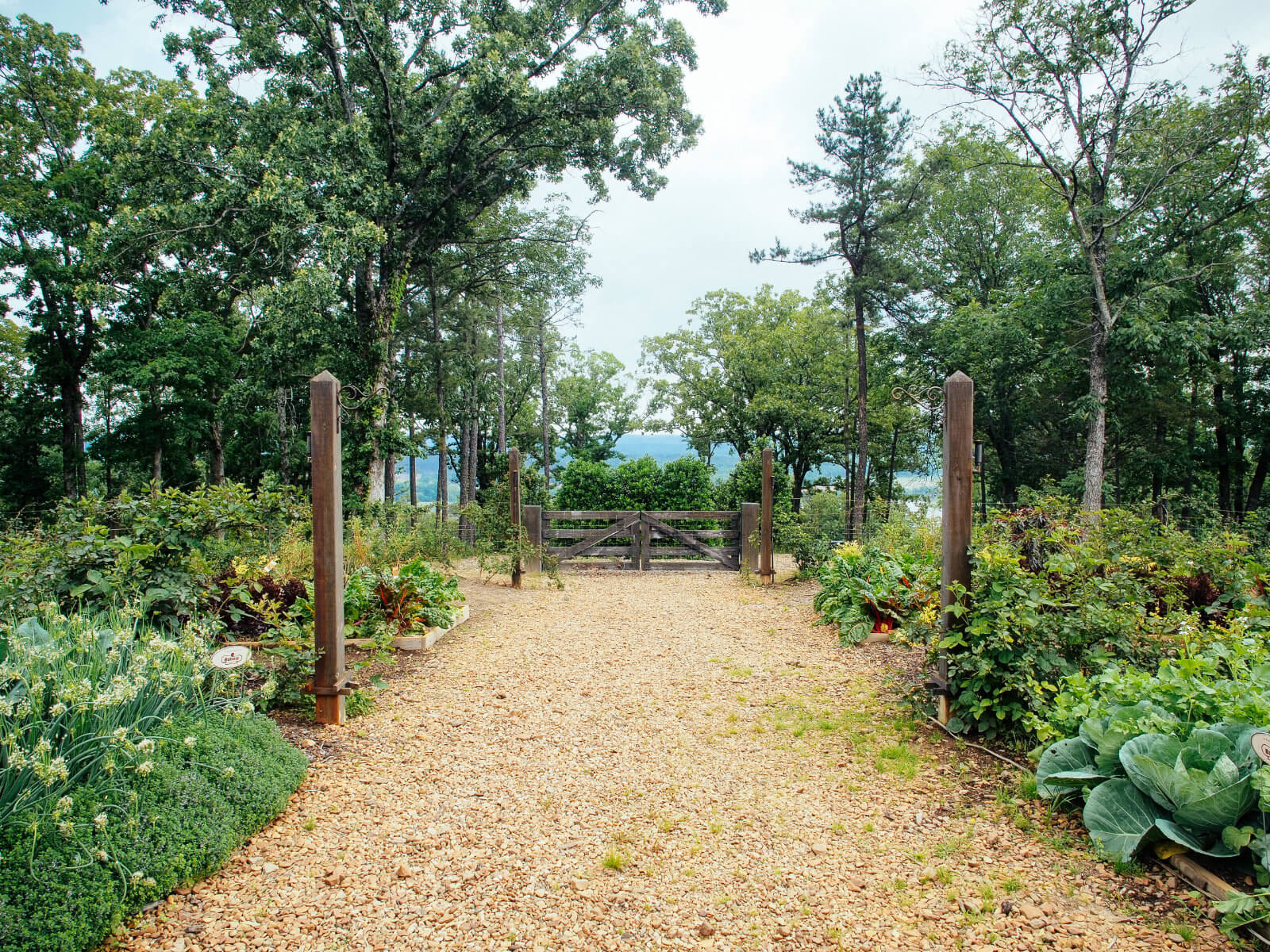
Root depth can help determine the best height for raised garden beds
If you install raised garden beds over concrete or gravel, you’ll want to know the root depth of the vegetables going in, since they will guide how high you need to build the sides of your beds.
Raised beds built over grass or dirt, however, typically don’t need to be more than the standard 8 to 12 inches in height because the roots can sink into the subsoil (assuming your beds are open on the bottom).
If you have the resources to go higher, however, I always recommend building raised beds at least 18 to 24 inches tall for several reasons: pest control, fewer weeds, warmer temperatures in early spring, and ease of planting and harvesting (when it comes to your back, that is). This is one of my top “lazy gardening” strategies for reaping larger harvests with less effort.
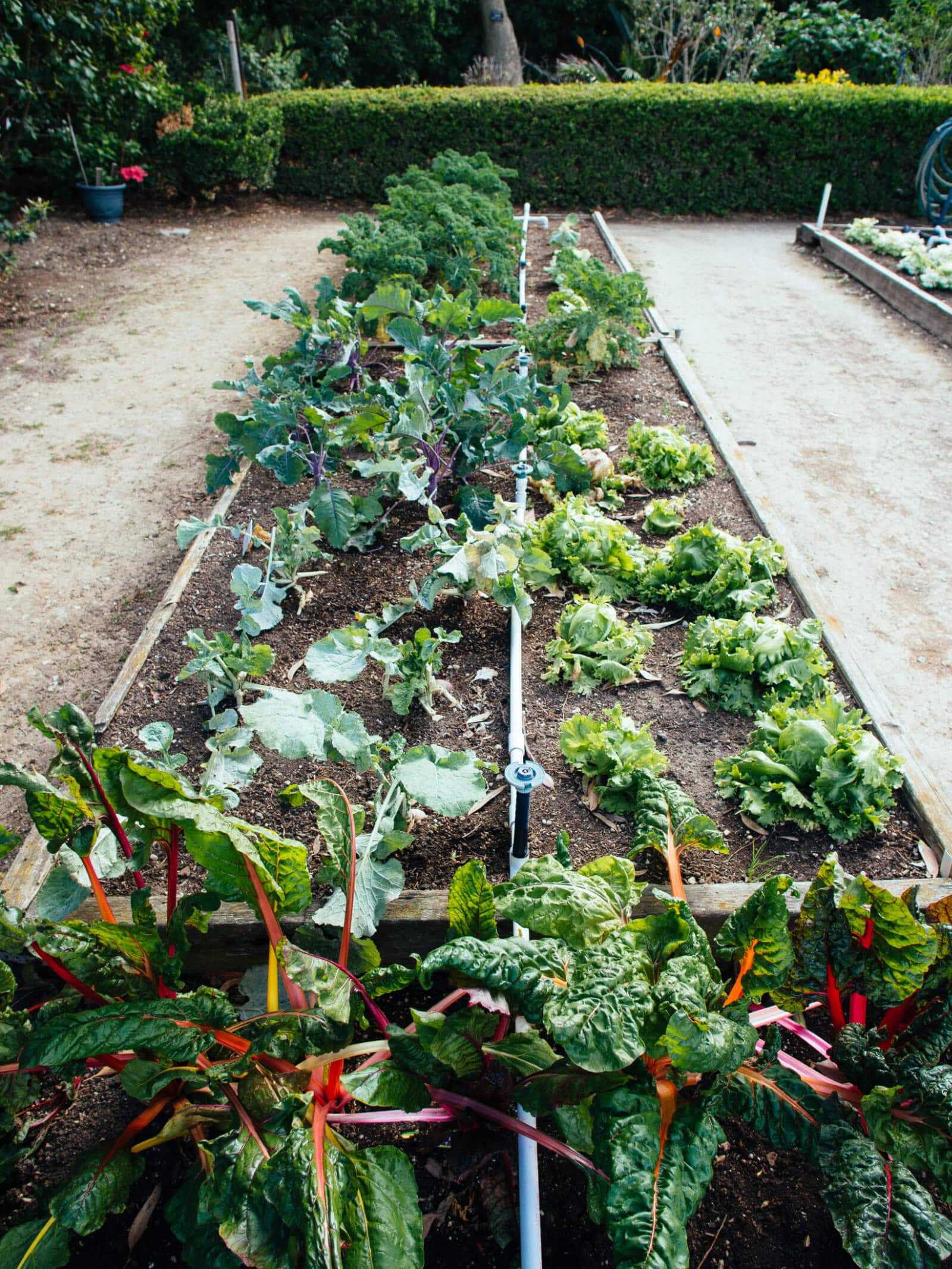
Gardeners in dry climates can use root depth to help with hydrozoning
Root depth is also helpful for hydrozoning, especially if you live in a drought-prone area.
Hydrozoning is the practice of grouping plants with similar water needs together in order to conserve moisture and irrigate more efficiently.
This means you’ll cluster all your shallow-rooted plants in the same bed so you don’t inadvertently overwater them, and group deep-rooted plants together in another bed (on their own irrigation line) so you don’t underwater them.
Hydrozoning also comes in handy if you like to interplant your crops by growing beneficial flowers and herbs among your vegetables, or planting quick-growing crops (like radishes) between rows of long-season crops (like broccoli).
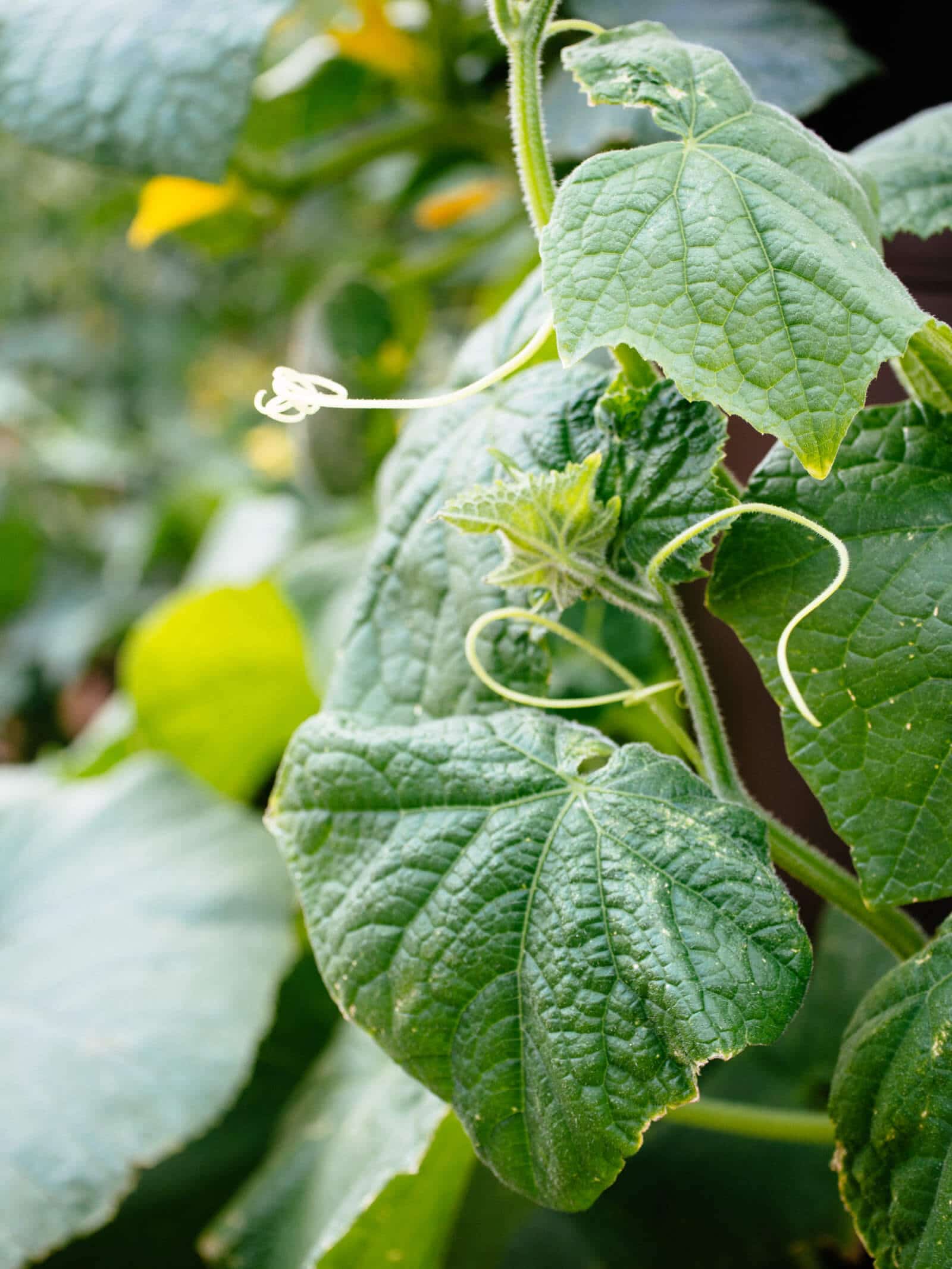
It’s not just how deep, but how wide
While we usually think of roots as growing downward, it’s important to remember that roots grow laterally as well, and to account for that in our garden beds and containers.
For example, a cucumber plant sends down a single tap root 3 to 4 feet deep. The majority of its roots, however, extend outward about 2 feet and are concentrated just below the soil surface.
You’ll also want to factor in the final height of the mature plants, as insufficient soil volume in a container can make them too top-heavy.
Always follow the spacing recommendations on your seed packets and plant tags to ensure you give your plants plenty of room to grow. If you’re planting in raised beds, however, you can space your plants more intensively without harming root development.
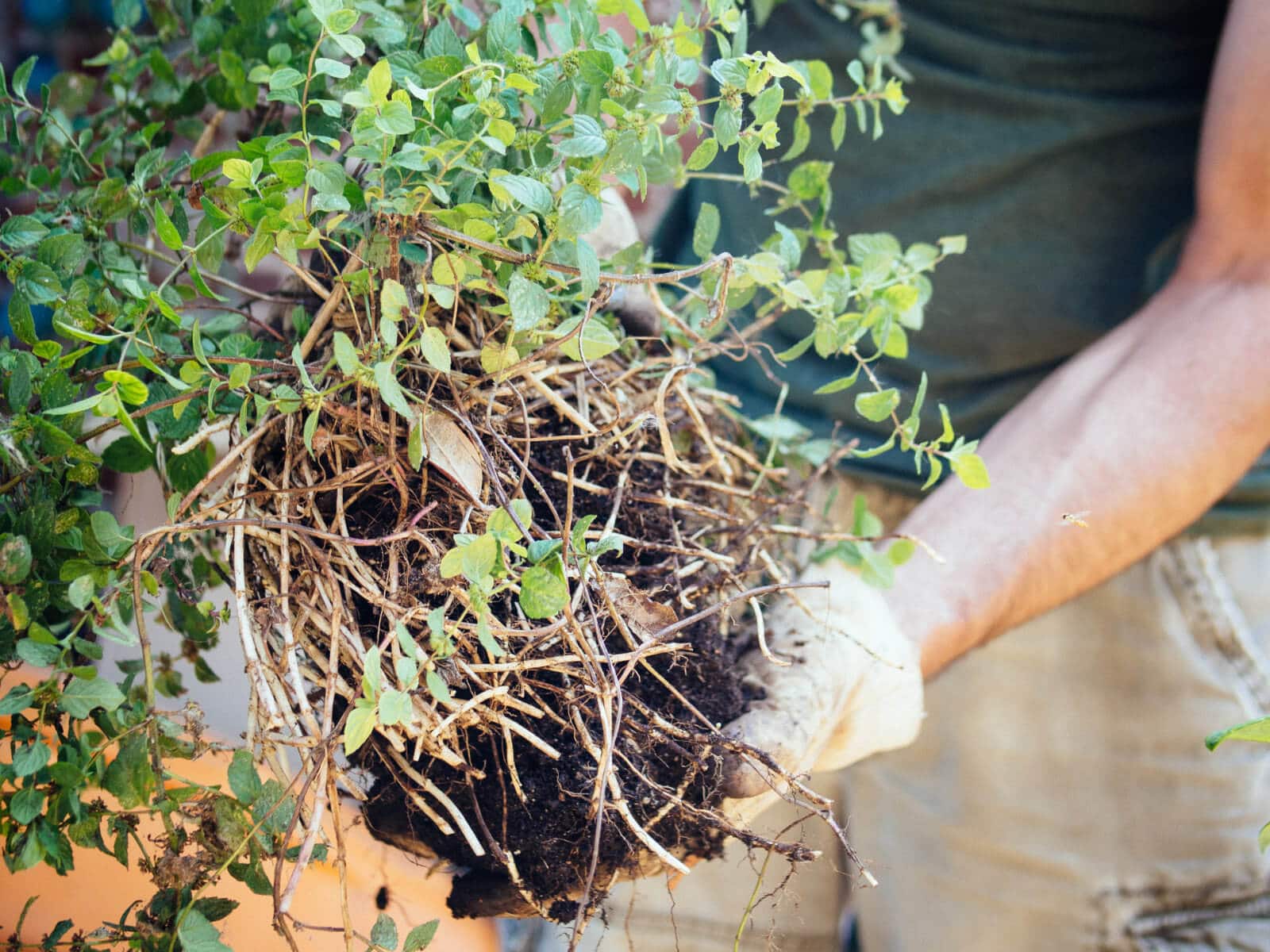
Soil depth requirements for common garden vegetables, fruits, and herbs
Some vegetables, like spinach and spring radishes, have very shallow roots and don’t need more than 4 to 6 inches of soil to grow successfully. But the smaller the planter, the more often you’ll need to water.
Just keep in mind there’s no need to plant these varieties in containers deeper than 12 inches, as you’ll only be wasting soil and space.
On the other hand, plants like lemongrass (which clump and multiply rapidly) and tomatoes (which grow adventitious roots along their stems) will grow as large as you let them, so giving their roots more room to roam will produce a more robust harvest.
Use the chart below to help you find the root depth of common vegetables and herbs, plan and prep your garden, and determine how deep your raised garden beds or planters should be.
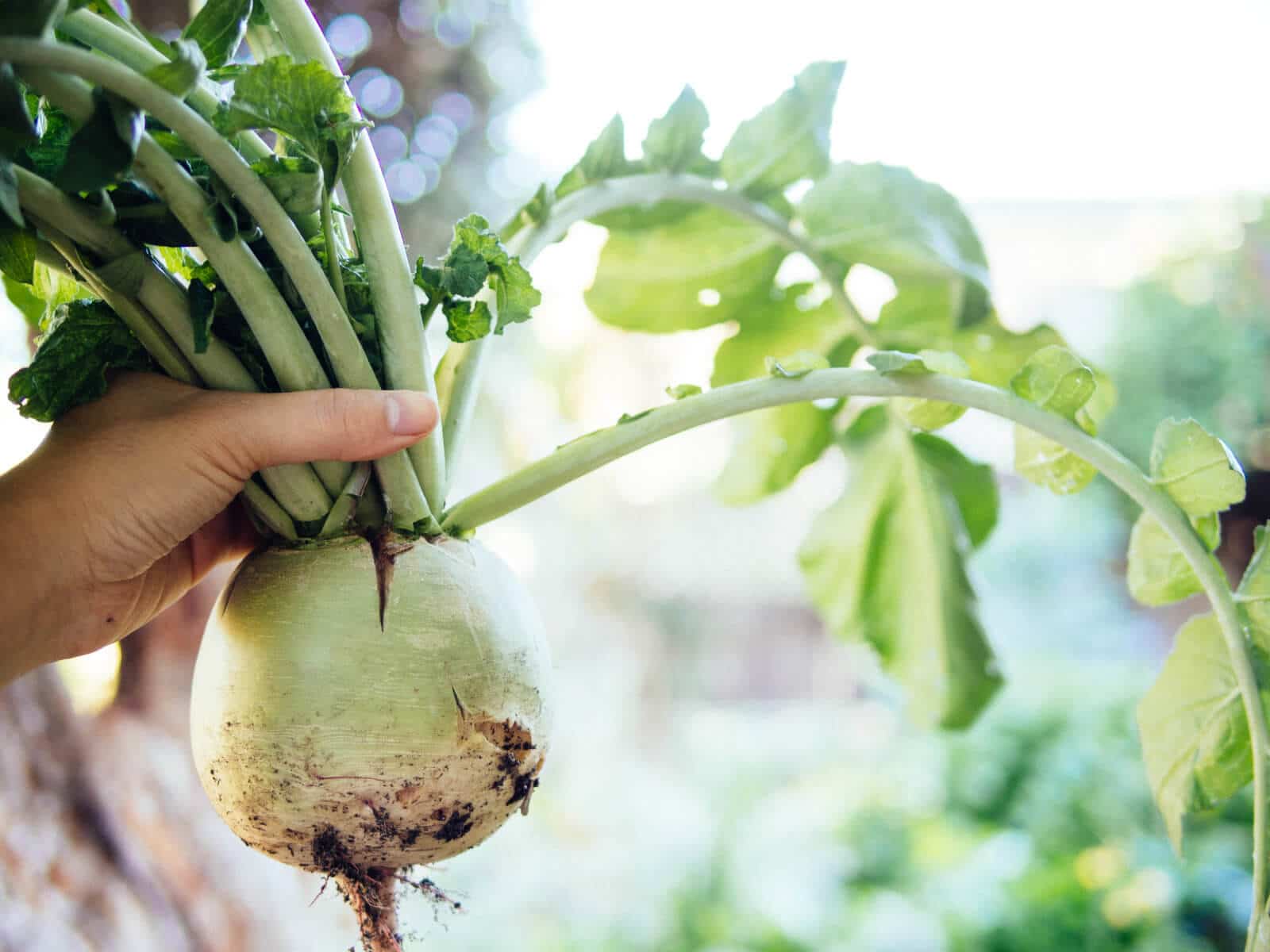
Garden Betty’s Vegetable Root Depth Chart
| Shallow Rooting (12 to 18 Inches) | Medium Rooting (18 to 24 Inches) | Deep Rooting (24 to 36+ Inches) |
| Arugula | Beans (fava) | Artichokes |
| Basil | Beans (pole) | Asparagus |
| Blueberries | Beans (snap) | Beans (lima) |
| Bok choy | Beets | Burdock root (gobo) |
| Broccoli | Cantaloupes | Cardoon |
| Brussels sprouts | Carrots | Okra |
| Cabbage | Chard | Parsnips |
| Cauliflower | Cucumbers | Pumpkins |
| Celeriac | Daikon | Rhubarb |
| Celery | Eggplant | Squash (winter) |
| Chives | Muskmelons | Sweet potatoes |
| Cilantro | Peas (shelling) | Tomatoes |
| Collard greens | Peas (snap) | Watermelons |
| Corn | Peas (snow) | |
| Endive | Peppers (hot) | |
| Fennel | Peppers (sweet) | |
| Garlic | Rosemary | |
| Ginger | Rutabagas | |
| Jerusalem artichokes | Sage | |
| Kale | Squash (summer) | |
| Kohlrabi | Turnips | |
| Leeks | ||
| Lemongrass | ||
| Lettuce | ||
| Mint | ||
| Mustard greens | ||
| Onions | ||
| Oregano | ||
| Parsley | ||
| Potatoes | ||
| Radishes (spring) | ||
| Radishes (summer) | ||
| Radishes (winter) | ||
| Scallions | ||
| Shallots | ||
| Spinach | ||
| Strawberries | ||
| Tarragon | ||
| Thyme | ||
| Turmeric |
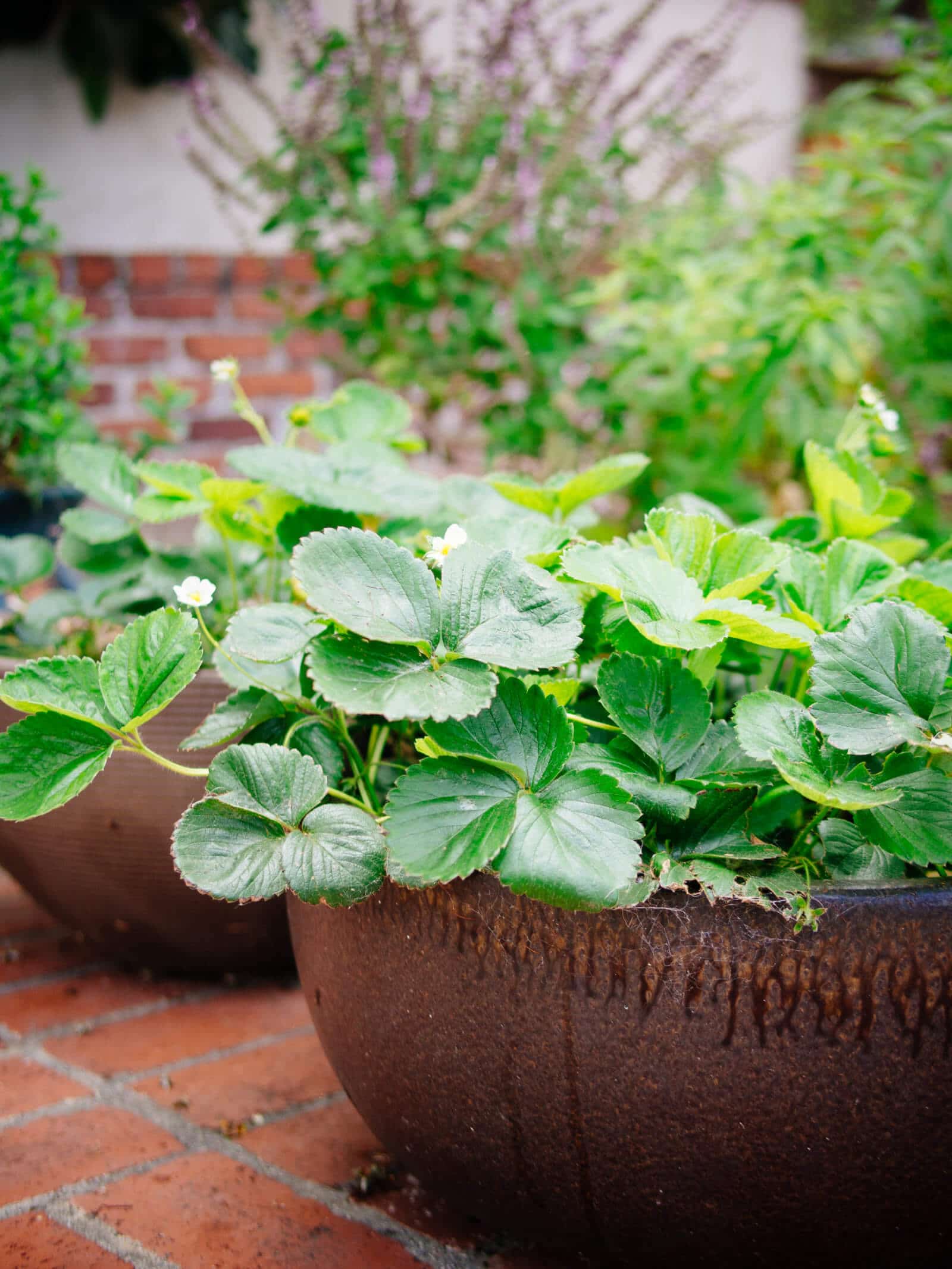
More ways to prepare for planting this season:
- Checklist for Your Spring Garden Tune-Up
- A Fall Garden Checklist for Maximizing the Season and Winterizing Your Yard
- Soil Solarization in Raised Beds
- Edible Ground Covers for Vegetable Gardens
- How to Use Days to Maturity on a Seed Packet to Help You Be a Better Gardener
- How Much to Plant in a Vegetable Garden to Feed a Family
- Brewing Compost Tea for Better Plant Health
- Common Gardening Mistakes and What I’ve Learned From Them
This post updated from an article that originally appeared on February 27, 2019.


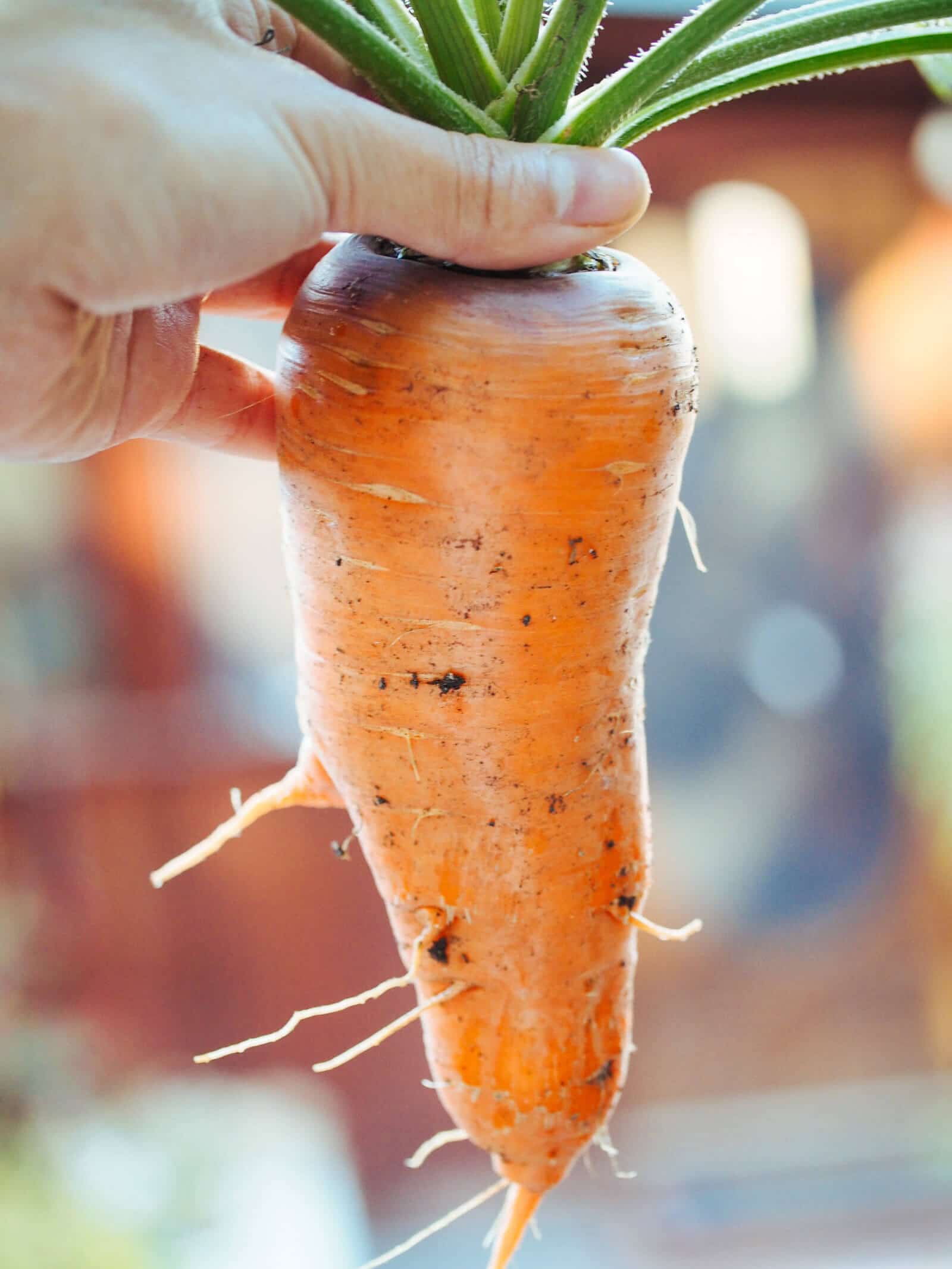
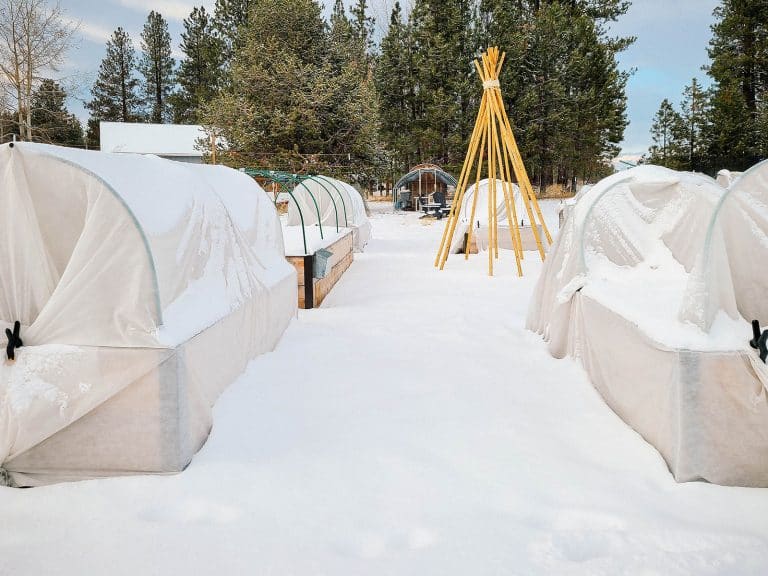


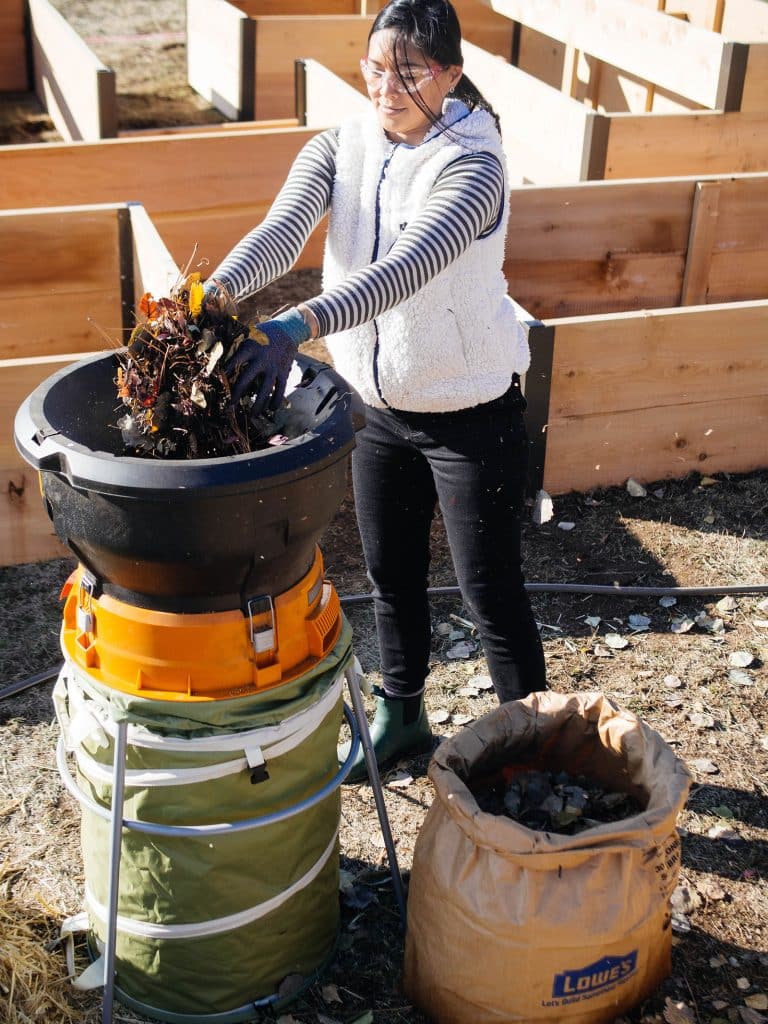






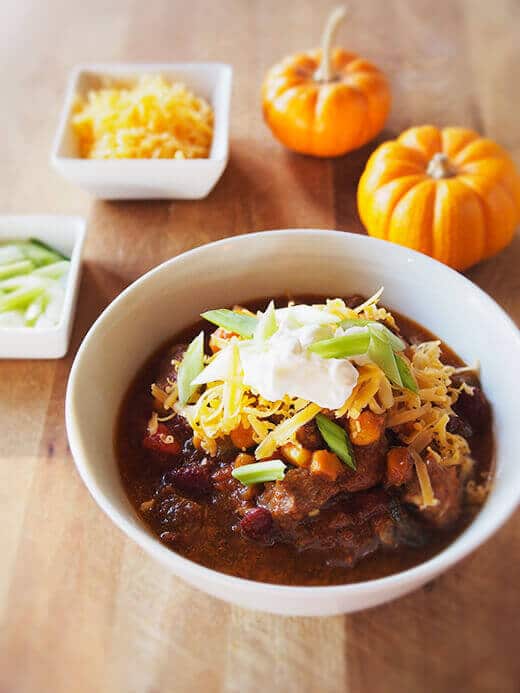
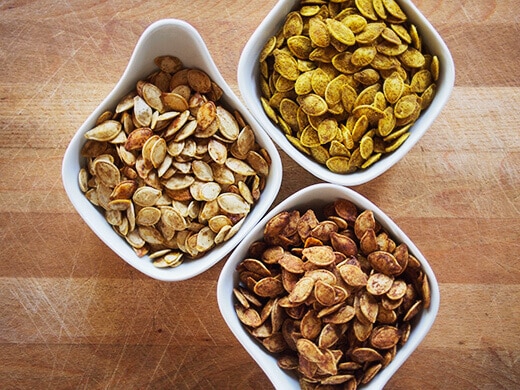

I would recommend to also research self watering planters, self watering pots. The plants that want more water do not have to go as deep to get all the water they want, and there is very little watering with the better designs. With the better designs, you never have to water or check water levels.
So I can’t have raised beds due to my living situation but I can have the elevated raised beds. I have been looking for some for a reasonable price but they only come in 8.6-inch depth. Is this only good for leafy-type veggies?
Nice article but… I find it hard to believe that all the plants listed have actual root depths as shown. Lettuce for example. 12-18 inch deep roots? ??? I was looking for the actual depth of roots so I could use the appropriate depth container for planting indoors before transplanting outdoors. I don’t think this list is what I need.
My thoughts too….garlic, 12″-18″? Not in all my years have I seen garlic roots this deep, or bok choy, or kohlrabi….these plants are known for having shallow root systems. Linda, can you clarify?
Then again, my plants have never gotten even half as big as yours! Look at that cabbage! It’s a giant! Beautiful garden!
Thank you so much for this article. My friend follows the package recommended spacing and I rebel garden. Meaning, campaign, vines, root and ect together. I love the chart, so I can share it with him. This is his first real gardening season, it is like watching a kid at Christmas.
I’m thinking of germinating radish seeds. I looked here for the recommendation of the best size for the roots and of course, I have to plan it well because they require a lot of space.
Thanks for the data!
How does “air pruning” change the picture? With growbags, baskets and other porous planters, the plant puts out a much denser mat of roots in all directions as it is air pruned all around, so I assume one can get away with a smaller container this way.
how deep does kale need to be? I don’t see it on your wonderful chart. Thanks
Hello, kale is listed in the chart. It’s a shallow-rooted plant.
What soil should I put in a raised garden bed?Wrig
You have a few choices depending on your raised bed depth and/or resources. You can buy bagged soil or bulk soil; fill with a mix of soil and compost; or make a “lasagna” style bed. Here’s a guide I wrote for a lasagna-style no-dig bed: https://gardenbetty.com/the-no-dig-vegetable-garden/
Personally, I have 24″-36″ raised beds and used a more economical hugelkultur method for filling mine. It’s a process I teach in my online course: https://www.lazygardening.academy/courses/lazy-gardening
Thank you so much for root depth chart. In Florida i use raised beds and containers. This chart will help so much based on my container size depth.
I love this garden blog, so interesting, so well laid out, and packed with useful info…
trying to make a small vegetable garden not sure how deep the vegetables will grow
I just built a 24″ raised bed for our garden next to a 8″ one and my wife wanted to know what to plant where. I was going to go through piles of pages about individual plants, when I found your chart. She got her answer almost immediately. Thank you for taking the time to do this. We live on 3″ of soil over rock, so it’s important here.
“Root depth is a topic that isn’t often considered when we think about growing in containers”
It’s definitely a topic I’ve been trying to learn about! I can’t grow plants outside, because I live in an apartment. Which means I need to make plant shelves, and use containers to grow the vegetables I want to grow. But sadly, trying to figure out how much space is needed for the root development, I couldn’t find an answer. Even when trying to ask other (local) gardeners, they didn’t know how to answer, because they all planted outside.
Thank you for this article! It really is a topic that isn’t discussed very often.
Thank you so much for the root depth chart! It is so very helpful when planning a garden.
You’re welcome!
Are there any other veggies besides spinach and spring radish that requires only 4-6 inches of soil? I’m trying to see how shallow I can get away with in terms of soil bed. Even the “shallow” part of your chart shows a minimum of 12″ for root depth, which still seems pretty high to me.
Baby lettuce grows in as little as 4-6 inches of soil — but the plants will be larger if given more soil volume. You can also sow various brassica/mustard seeds (kale, broccoli, mizuna, etc.) in shallow soil and just harvest them early when they’re in baby leaf stage.
Easy to read with full of good information. Thank you!
Frank
You’re welcome! I’m glad you found it useful!